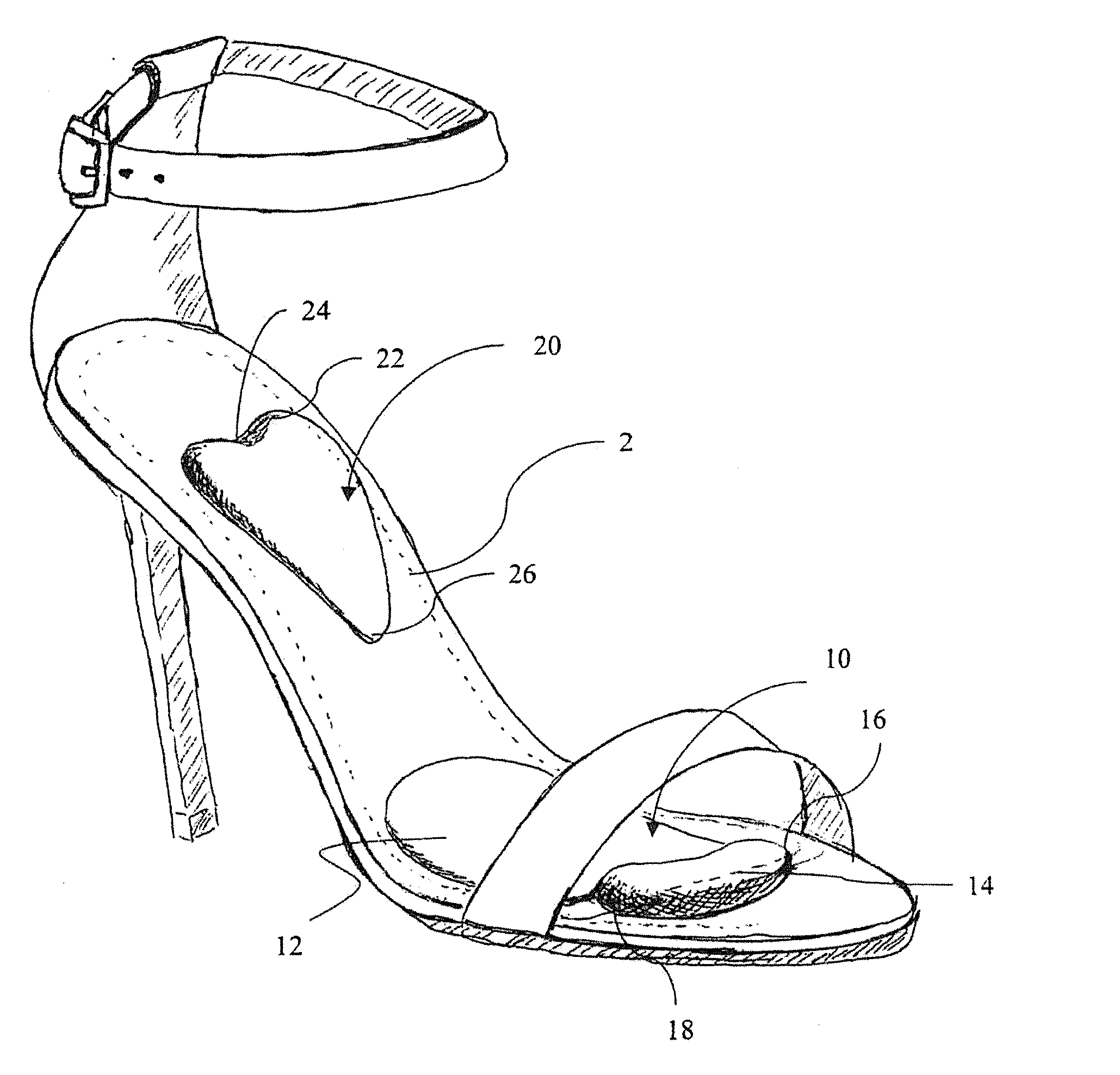High heel shoe inserts
a technology of inserts and shoes, applied in the field of orthopaedic shoe inserts, can solve the problems of uncomfortable high-heeled footwear, long wearing of high-heeled footwear, foot discomfort, etc., and achieve the effect of preventing forward movement of the foo
- Summary
- Abstract
- Description
- Claims
- Application Information
AI Technical Summary
Benefits of technology
Problems solved by technology
Method used
Image
Examples
Embodiment Construction
[0036]With reference to the drawings, different embodiments of the present invention will now be described.
[0037]The high heel shoe inserts 1 of the present invention are illustrated best in FIGS. 1 to 4. In one embodiment there are two inserts, a forefoot insert 10 and an arch insert 20 that are placed in a high-heeled shoe 2. While, particular designs of high-heeled shoes are illustrated in FIG. 1 and FIG. 5 it is understood that inserts 1 may be placed in any style of high-heeled shoe 2 including high-heeled boots or sandals.
[0038]The benefit of the combination of two inserts is that it is effective in; stopping the foot from sliding forward or sideways; stabilizing the heel, and changing the point of balance of the shoe backward to take some of the weight off the balls of the feet. The two inserts 1 may fit into any snug fitting high heeled footwear that a person buys or already owns because it is adapted to take up no space in the footwear that is not already a naturally occurr...
PUM
| Property | Measurement | Unit |
|---|---|---|
| Shore hardness | aaaaa | aaaaa |
| thickness | aaaaa | aaaaa |
| angle | aaaaa | aaaaa |
Abstract
Description
Claims
Application Information
 Login to View More
Login to View More - R&D
- Intellectual Property
- Life Sciences
- Materials
- Tech Scout
- Unparalleled Data Quality
- Higher Quality Content
- 60% Fewer Hallucinations
Browse by: Latest US Patents, China's latest patents, Technical Efficacy Thesaurus, Application Domain, Technology Topic, Popular Technical Reports.
© 2025 PatSnap. All rights reserved.Legal|Privacy policy|Modern Slavery Act Transparency Statement|Sitemap|About US| Contact US: help@patsnap.com



